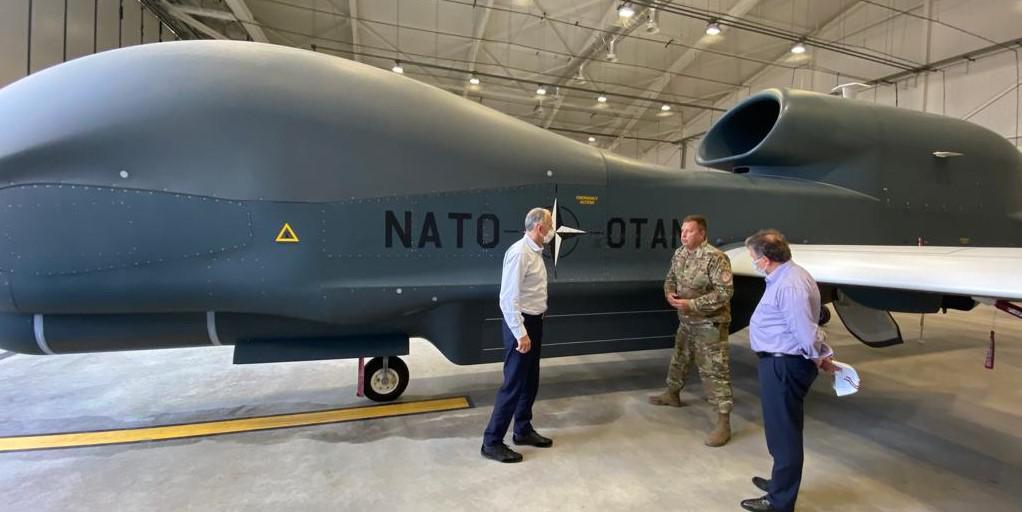DISA Looks Heavenward for Cyber With NATO
The battle for cyberspace may hinge on outer space as experts expand the digital frontier. The leading U.S. military communications organization is working with partners in NATO to exploit and dominate space communication systems with an eye to hurling defense systems into an advanced technology future.
John R. Kahler, chief of the Defense Information Systems Agency (DISA) NATO Field Office, offers that space is the biggest challenge facing DISA and NATO in cyber. Its characteristics of being open and available offer both opportunities and vulnerabilities. He believes that NATO nations will embrace space just as they did the Internet.
Kahler elaborates that the space arena, particularly satellites, is vital to cyberspace. “We are beginning to expand in many different areas in space itself.” However, he also warns that adversaries are pursuing the same goals in this key area. “Technology today is not like it was yesterday, where you were limited by the knowledge of availability of what’s out there. We have to be very front-moving with respect to space and our activities.”
He continues that NATO is working in several different areas that relate to the space realm. Big data, wireless technologies and other capabilities are active among NATO nations, and the alliance is putting together working groups to accommodate those technologies accordingly. One key is the adoption of standards for space cyber links. Defining the requirements for industry partners will establish the necessary alignments to pursue vital areas for advanced technologies, he says.
Kahler offers that DISA is leading the way for NATO in cyber. “DISA is the tip of the spear for NATO cybersecurity,” he declares. “There is no doubt about it. DISA sets the gold standard; it is the organization to emulate.” The agency has field offices around the globe with a dispersed workforce interconnected in a giant network.
“Not only is that cybersecurity workforce reaching out and protecting our defenses in our military, but they are also helping our alliance partners do the same across the board in a collaborative effort,” he emphasizes.
Kahler states that DISA’s cyber base is the best in the world. “DISA’s technical capabilities are second to none,” he maintains. Yet, he emphasizes that the flow of technology between DISA and NATO is two-way. He cites a talented workforce aligned with academia and industry that creates a synchronization among global technology and that workforce.
That same approach benefits and applies to all NATO members. One advantage to working with NATO is that 30 nations are focused on the same goal, Kahler observes. This large community allows multiple capabilities to be leveraged from industry, scientists and academia throughout the alliance.
Other nations have lessons learned that can benefit alliance members and DISA, he adds. The information shared through standards development, cyber working groups and capability teams “makes a difference” in NATO cyber readiness. “Each nation brings to the table a different perspective and a different view—a different culture, a different way and a different approach to dealing with cyber.
“Together, they form a very strong alliance against hazards associated with cyber,” Kahler states.
The DISA office works through NATO’s mechanisms, he continues. The alliance’s collaborative effort is shared by all the nations through different boards, one of which is the Consultation, Command and Control (C3) Board. This board defines standards, which are moved to the capability panels when they are identified as requirements. The DISA office provides subject matter expertise to alliance members.
“We bring the full breadth of DISA’s knowledge and technology to that table, and so we share that with our mission partners to help define those requirements and those standards,” he offers. “That provides a significant capability.”
And identifying areas for standards that align with cybersecurity are vital, he continues. Topics such as asset management, service management and cloud technologies stand out. Expanding networks under a single standard is ripe for solutions, which is being borne out as NATO implements its federated network. This network is aligned with risk reduction and vulnerability mitigation, and it represents a significant way forward, Kahler says.
“That technology and the direction in which NATO is going is largely based on a lot of the things that DISA already has put out there and put in place,” he adds. “That alignment between DISA and its lessons learned and those technologies are feeding over into the NATO alliance, and so our partners are using them. NATO is really using that to their benefit moving forward.”
The U.S. support of the C3 Board includes high-ranking U.S. officials attending its meetings, Kahler adds. This complements the DISA field office that is located in the middle of that activity. The board’s process is “very structured and very formal,” he says, and it opens up technologies “in a very neutral way.” The board defines the requirements, which are fixed because they are standards. Once the standards are defined, the Standardization Agreement (STANAG) is finalized and industry partners can enter the bidding process. A vendor that presents the best opportunity to meet the STANAG standards is selected for the contract.
Dealing with NATO from a U.S. perspective is a challenge, Kahler allows. He works with DISA from his post overseas, which faces the tyranny of distance. On the other hand, the NATO Communications and Information Agency in which his DISA office is embedded is very similar to DISA, he offers. Both groups perform the same function for their respective parent organizations, the U.S. Defense Department and NATO. Also, the NATO agency and DISA are willing to share capabilities for the betterment of both. That willingness is not always present with individual countries in Europe, he notes.
“Being in this position, you really get to see the relationship and impact that DISA has on its mission partners, particularly over here in NATO,” he points out. “We have 30 nations working together and leveraging those lessons learned and resources that DISA provides—and being able to share that at a central location.” The agency also is able to reach back to its own resources in the United States and apply them around the globe.
One of the biggest assets NATO offers DISA is the willingness to work collaboratively toward a single goal, he elaborates. “That’s very refreshing to see that occur when you go to a meeting of 30 different nations focused on interoperability in communications.”
He continues that each nation brings its own technological capabilities, and they are different. But technology today is becoming ubiquitous, especially with many U.S. industries working in Europe through their own presences, in some cases collaboratively. NATO has established a working group of industry partners, which Kahler describes as unique. Companies from the United States and Europe focus on requirements that emerge from the C3 Board, such as with 5G.
DISA’s work with its industry partners domestically sets the standard for how it aims to help introduce commercial innovation into NATO systems, Kahler says. For example, the agency brought industry partners to the table to help define the future of 5G. That model made its way to the European Union (EU), which now has a 5G working group that incorporates the same concept. “That’s a significant move forward and a great example of using something that we’ve moved toward in a collaborative way for the betterment of the entire EU itself,” he observes.
At a higher level, the United States has disagreed with some of its European allies over the use of the Chinese firm Huawei for 5G development, with U.S. officials concerned over security vulnerabilities that might be present in the Chinese technology. Kahler offers that these disagreements are not affecting the use of 5G in NATO, as the partners are still working collaboratively on 5G requirements and are examining all options in capabilities. In the end, it may come down to multiple vendors all having a piece of the system.
NATO approached industry partners from all over the world for a plan for expanding 5G. These partners came to the working group, and they’ve made progress, Kahler reports. Other recent working group efforts have focused on cloud technology, he adds.







Comments